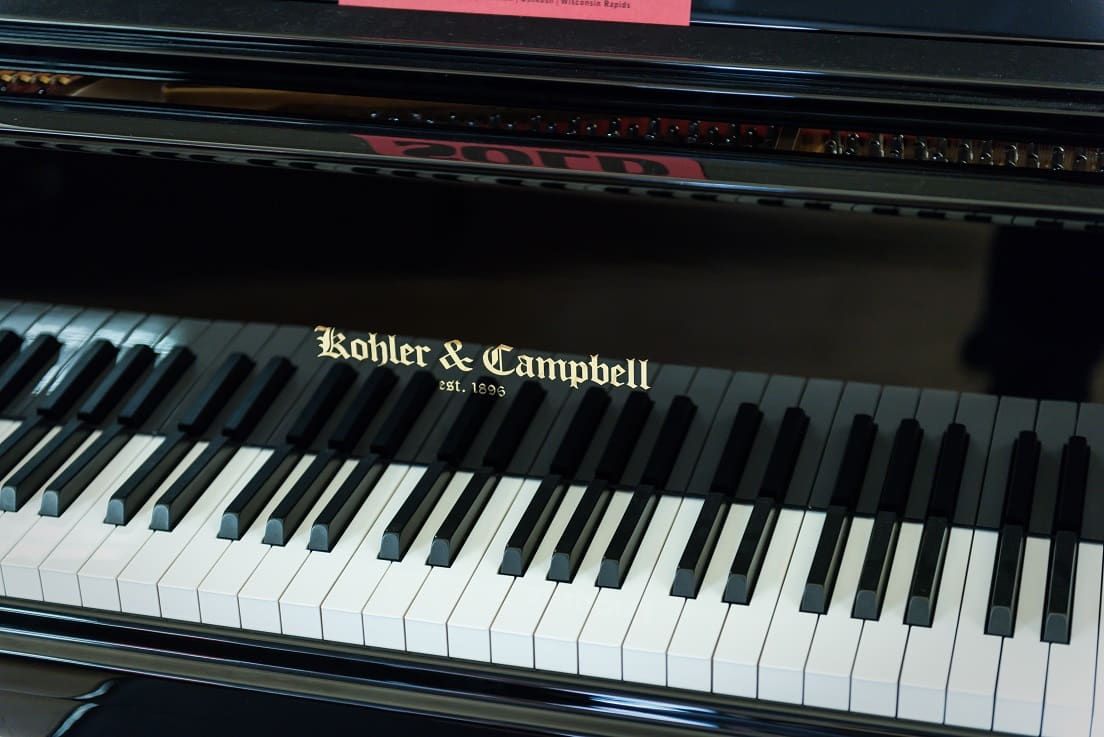
There is a considerable heritage behind the names of Kohler & Campbell. These two gentlemen carved out their piano manufacturing business from 1896 when they decided to join forces and aim to bring the best pianos to the American market of the time. From the age of only twenty, Charles Kohler was a dedicated piano maker. By many Kohler was considered to be an astonishing innovator, even a genius businessman, and thereby a perfect complement to the talents of Kohler.
Kohler And Campbell Piano Review
Charles Campbell was no less remarkable man. By trade, he was a machinist, but Campbell was also an inventor of note. In his brief life, he is credited with inventing several unique metal and wood making machines. This gave rise to some truly ground-breaking manufacturing techniques when the two men became partners, working together making pianos for eighteen years.
Charles Campbell died unexpectedly in 1908, cutting short the promising partnership of Kohler and Campbell. The pianos that were marketed as being the “best value for the dollar”, did not end with Campbell’s death. Instead, Kohler & Campbell pianos continued from success to success ensuring their names earned their place in the piano history books.
From a modest loft space on 14th Street New York the Kohler & Campbell factory soon expanded to new accommodation on 50th and 11th Avenue. At these premises, following Campbell’s death, Kohler made and sold the player-pianos for which they became well-known. In the space of a single year, at their height, Kohler & Campbell produced an astounding 50,000 player pianos.
Through many changes of location, the ownership of the company largely remained within the Kohler family until the late 1950s. Eventually, Kohler & Campbell sold their business to the Samick Music Corporation. Samick still makes the Kohler & Campbell pianos but they are manufactured mostly in Indonesia and South Korea.
Of the pianos that are made today under the broad banner of Samick are the ‘Millennium Series’. The claim from the company is that the Millennium range of pianos encapsulates hundreds of years of experience in piano making. These pianos are ‘crafted’ in Korea that has according to the Samick site, won awards for their processes and standards. The Millennium range boasts the very finest quality materials to accompany quality manufacturing.
Spruce from Canada is the material for the soundboard and air-dried maple that is made into bridges that transfer the sound from strings to the soundboard. Interestingly, the hammers, action, and keys are German from Pratt Reed. The Millennium range is quite extensive from the KCM-500 to the flagship model KFM-850. Each piano comes with a manufacturer’s warranty of ten years.
Vertical or upright pianos are induced in the Millennium family with eight pianos in the KM series and four in the KC or New Yorker series. As far as I can tell it is mostly the shape and styling that determines the model number as opposed to the internal manufacturing or quality of components. This brings a good selection of choices for those searching for a new model Kohler and Campbell.
Trawling the populated piano forums, it has clearly shown that there is a great divide amongst pianists and piano dealers. A significant number of USA dealers who have Kohler and Campbell in their catalog are stating that the new models (The Millennium) of Kohler and Campbell are perhaps not the top-quality category of a Bluthner, Yamaha, Steinway, or Kawai, but do represent a low to the mid-range instrument. This competitive pricing together with some notable names in the piano manufacturing world working with ‘Samick’ make the grand pianos especially worthy of consideration.
As for the many pianists, the opinions of Kohler and Campbell stretch from the downright derogatory to the somewhat surprised. The surprise I think originates from the many mixed reviews these pianos receive that do not always parallel in practice when trying the instrument for real. What some piano players mention is that even on the new models, there’s a strong chance you could buy a rogue one that just is not fit for purpose.
The manufacturing standards are reportedly high but tonal inconsistencies appear not to be uncommon. One commentator said that the Kohler and Campbell piano he tried had a very dull lower end but that once past A3 the tone became overly brittle and bright as if there were two entirely separate pianos in one case. Another quite abrasive comment was made by a pianist who experienced one of the strings snap on a Kohler and Campbell grand right in the middle of a performance.
The sad truth is that it only takes a few unfortunate happenings like the ones mentioned above for the reputation of a piano manufacturer to be called into question. That coupled with the perception that certain leading piano manufacturers are in some way faultless with their delivery of excellent pianos, that other brands do not stand much of a chance.
Almost regardless of the piano you choose, you can still find poor examples of even the top range of pianos. It is less likely perhaps, but a piano is in many ways a living instrument, handcrafted, and highly likely to be different each time to a degree. In other words, dismissing Kohler and Campbell’s pianos out of hand having never tried them would not be proper.
It may be well worth your time considering an even older model of Kohler and Campbell. If the manufacturing did not change for the better in more recent years, then you may have luck in finding a piano from saying the 1960s that with careful restoration might fit your needs. Alternatively, the Kohler and Campbell player pianos are still collectible and can fetch some steep prices at auctions. Whichever way you decide, Kohler and Campbell is not a piano manufacturer to ignore.
